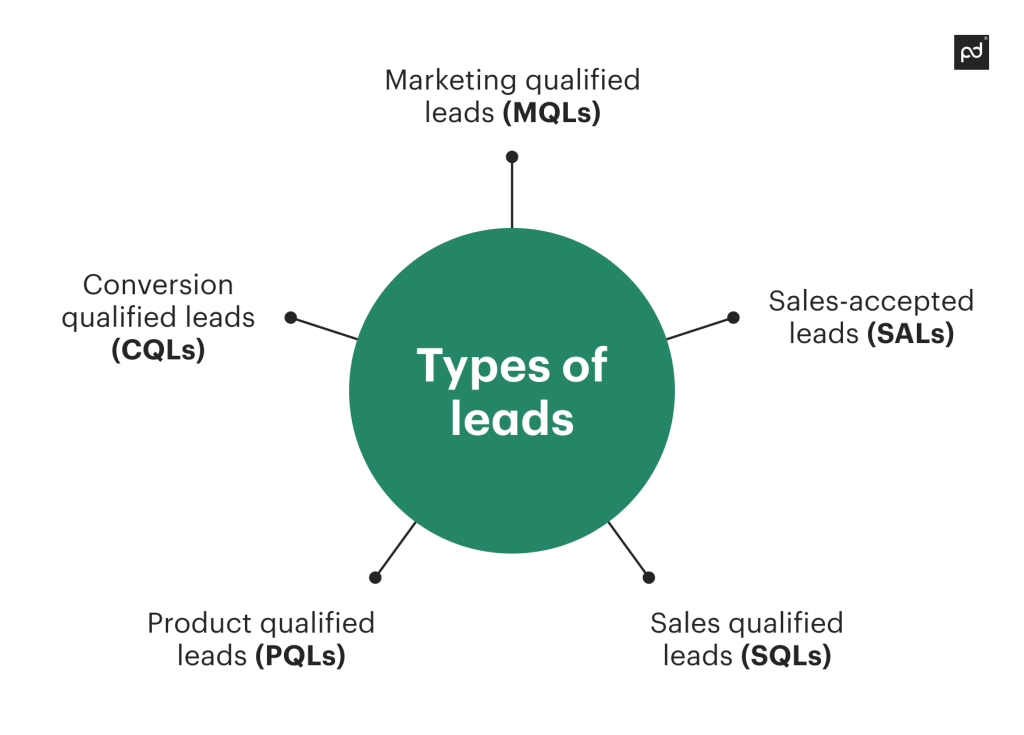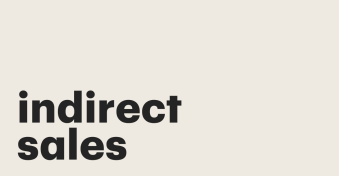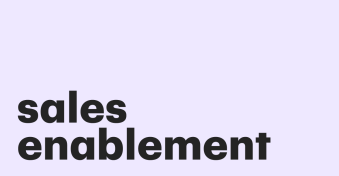Generating leads is vital, but it’s only half the battle — you also need to figure out which leads are most likely to become paying customers.
That’s where lead qualification comes in. In this post, we’ll explore what’s involved in the process and show you some winning strategies.
Key takeaways:
- Lead qualification identifies high-quality leads who are likely to buy.
- Leads may be qualified by your marketing or sales team.
- Reps should ask qualifying questions about the lead’s budget, goals, and challenges.
- This process ensures you don’t waste time on leads that aren’t a good fit for your business.
What is lead qualification?
Lead qualification is a process carried out by sales and marketing teams to find out if a lead is likely to become a paying customer.
It involves categorizing them according to characteristics such as demographics and behavior and prioritizing those that are a good fit.
Lead qualification happens after you’ve carried out lead generation.
It continues the task of gathering data about the people who engage with your website, social media posts, or outreach efforts and is the first stage in the sales prospecting process.
It’s not just about getting as many leads into the sales funnel as possible.
Even though someone has engaged with you, they may not become the type of customer you need, so the qualification process requires you to differentiate and weed out unsuitable leads.
Why is lead qualification important?
Lead qualification is about prioritization
Once you’ve identified which leads are worth chasing (and which aren’t), you can focus entirely on high-quality prospects — and allocate resources accordingly.
There’s no point sending poor-quality leads along the sales funnel because they’ll drop out farther down the line.
Qualifying leads helps to minimize wasting time and money
Qualifying leads helps to minimize wasting time and money on those who aren’t likely to convert.
It also helps you increase revenue because qualified leads are the ones who’ll eventually make a purchase.
The process lets you understand your potential customers better
The process lets you understand your potential customers better, including their preferences and motivations.
When you know their pain points, you can position your solution as the ideal answer.
You can also personalize the sales experience to make your pitch and value proposition relevant to each lead.
You can be confident that the lead will benefit from using your solution
You can be confident that the lead will benefit from using your solution.
This, in turn, improves post-purchase satisfaction, as good-fit leads are less likely to return the product or leave a negative review.
You should be able to cross-sell or upsell to happy customers in the future and earn valuable word-of-mouth referrals.
Lead qualification provides structure and consistency
Lead qualification provides structure and consistency, giving you a repeatable framework that streamlines your sales workflow process and shortens the sales cycle.
Each time you do it, you’ll become quicker at identifying high-quality leads and knowing the best ways to guide them toward conversion.
Lead qualification improves sales forecasting by helping you predict the number of leads who’ll go on to make a purchase.
This is useful for many business areas, from setting budgets to managing inventory.
How the lead qualification process works
The process of qualifying leads begins once your sales and or marketing teams have generated a sufficient pool of leads.
These may come via inbound marketing, where someone interacts with your online content, or cold outreach, where you establish initial interest through a phone call or email.
Either way, this lays the groundwork for the research phase.
Take the information you’ve already collected and build on it by finding out as much as you can about each lead.
You can use your ideal customer profile to determine whether the lead is a close enough match.
Leads who check all your boxes are eligible for the next qualification stage.
No matter if they were originally generated by sales or marketing, it’s your sales team that now takes the reins and makes a call.
Reps should ask questions about the lead’s interests, needs, and challenges.
If a rep gets a positive response, the lead is officially “qualified” and should be passed over to the direct sales team for follow-up.
If their response is negative, the lead should be disqualified.
The different types of leads
Before we explore the various types of leads, let’s clear up the difference between leads vs prospects.
Leads are the potential customers you generate through inbound marketing and cold outreach. As it’s not yet clear whether they’re really interested in your solution, they’re unqualified.
Once a lead has been sales-qualified, they can then be referred to as a prospect.

Marketing qualified leads (MQLs)
These “warm” leads will have engaged with your business by downloading content or searching for product information but remain undecided.
Your marketing team feels that these people could become customers if nurtured by your sales team and passes them over for a targeted approach.
Sales-accepted leads (SALs)
These are MQLs that marketing has sent to your sales team for further evaluation.
This means your sales team is in possession of the lead’s details and is ready to engage with them.
Sales qualified leads (SQLs)
These often begin as MQLs but can also be generated by your sales team.
They’re potential customers who’ve shown significant interest and are a good fit for your product or service.
But they’re still not ready for conversion — this just means that the lead is “hot” and should be prioritized for direct sales contact.
An SQL can also be called an “opportunity.”
Product qualified leads (PQLs)
These people are clearly interested in your solution because they’ve taken action, such as signing up for a free trial or starting a freemium subscription.
They’re ready for direct sales contact.
Conversion qualified leads (CQLs)
These leads have also demonstrated a strong interest by submitting a form on your website or using your click-to-call button. In this case, “conversion” means taking a desired action rather than purchasing.
How is lead scoring different from lead qualification?
Lead scoring is a way of prioritizing leads, but it’s still part of the overall lead qualification process.
As we know, qualifying leads is about predicting their likelihood of making a purchase.
Lead scoring takes place after qualification and involves comparing qualified leads against each other.
So, what’s the purpose of scoring leads? It’s to help you figure out who to contact first.
Using demographic information and details of how the lead has engaged with the company so far, sales teams can assign each lead a score — typically on a scale of 0 to 100.
These values denote different actions the lead takes, such as opening an outreach email or searching for information on your website.
Depending on your company’s goals and priorities, some actions are more valuable (and worth more points) than others.
These scores also correlate with different stages of the sales funnel.
A lower score means the lead is at the top (in the awareness stage), while a higher score places them nearer the bottom (in the decision stage).
How to qualify a lead step-by-step
So, we know how the qualification process works, but exactly how do you qualify a lead? Here’s a step-by-step guide.
Create an ideal buyer profile
If you don’t already have an ICP, it’s time you develop one — or else your existing one may need an update.
Sales and marketing teams must work together on this so everyone knows what constitutes a good match.
Identify your target audience and the characteristics your ideal customer should have. For example, their age, location, spending ability, and pain points.
Define lead scoring criteria
Although lead scoring happens at the end of the qualification process, you’ll need to set up a system in readiness.
Determine which actions taken by leads are most valuable to your business, and assign each one a numerical value in order of importance.
Research your leads
You should have a database of leads generated through marketing activities, outreach, and inbound sales strategies.
Look for leads that match your ICP and indications that they’re interested. What are their challenges, and could your solution help?
If you’re selling B2B, check out the lead’s organization — its size, mission and values, competitors, and industry challenges.
Track behavior such as social media use and interactions with your website.
Choose a qualification framework
Several frameworks are designed for lead qualification, all made up of acronyms to help sales reps remember the right questions to ask.
Choose the one that aligns best with your goals, e.g.:
BANT (budget, authority, needs, timeline)
This helps you determine if a lead has the right budget and the authority to make decisions.
It checks for relevant pain points and determines the timeline toward conversion.
It’s often used in B2B sales due to their longer sales cycles.
A rule of thumb is that if the lead meets three out of four criteria, they count as qualified.
GPCTBA/C&I (goals, plans, challenges, timeline, budget, authority/consequences & implications)
This takes a similar approach to BANT but aims to discover the lead’s goals and future plans.
It encourages them to consider what will happen if they don’t find the solution to their challenges.
ChAMP (challenges, authority, money, prioritization)
Once you know a lead’s challenges, you can adapt your sales pitch to these.
This framework also focuses on how highly a lead prioritizes finding a solution — specifically, your solution.
MEDDIC (metrics, economic buyer, decision criteria, decision process, identify pain, champion)
This identifies various factors that will influence a lead’s purchase decision, particularly if they’re buying on behalf of a large business.
Hence the focus on the decision process and finding a “champion” in the organization to promote your solution.
Some reps use a variation called MEDDPICC, which adds “P” for “paper process” and “C” for “competition”.
ANUM (authority, need, urgency, money)
This one’s pretty similar to BANT, but it places authority—talking to the actual decision-maker—as the priority.
Make the call
Once you’ve selected a framework, you’re ready to make a qualifying call. Remember, you’re not trying to make a sale here.
You’re simply opening up the lines of communication and aiming to get a better idea of things like pain points and budget.
Be aware that you might have to make multiple calls to get this information.
Disqualify poor leads
You’ve now spoken at length to the lead, and discovered that they don’t have the necessary authority or budget, are not a match for your ICP, or your product doesn’t fit their needs.
There’s no need to go any further — mark them as disqualified.
However, if you think their circumstances will change in the future, place them into a “nurturing sequence” of periodical email reminders.
Score leads
Using the criteria from step two, you must now give each qualified lead a score.
If you have a large pool of leads, this can be time-consuming, but there are AI and workflow automation tools to help.
These enable predictive scoring, which involves software analyzing your sales and marketing data to assign scores and predict possible outcomes.
Follow up
After qualifying and scoring leads, you’ll have a list of people who should be a great fit for your solution.
Use follow-up interactions to move them through the sales pipeline — for example, the next step might be booking a virtual or in-person meeting or a product walk-through.
Put a system in place for following up with leads, so you can contact them with the optimum frequency and method.
Qualifying questions to ask
These top-of-funnel sales calls rely on reps asking the right questions.
You’ll need to choose these carefully, according to your ICP, your lead scoring criteria, and your selected lead qualification framework.
You can ask as many as you need to. Some questions will be pretty basic, such as:
- Are you looking to switch to a new solution?
- What’s your maximum budget?
- Who’s the decision-maker for your company?
- What’s your top priority at the moment?
- What’s the timeline for achieving your goals?
These are important, but the rest should be more open-ended questions encouraging the lead to tell you about their challenges and goals. For example:
- Can you tell me about your company’s strengths and weaknesses?
- What are some of the key challenges for your industry?
- What will happen if you don’t address this pain point?
- Do you currently use a particular tool to solve this challenge?
- What do you like and dislike about your current provider?
- What metrics does your company use to measure success?
Although a qualifying call isn’t an out-and-out sales pitch, you can still find opportunities to position your product as the ideal solution — either during this call or in a follow-up.
A simple lead qualification checklist
In sales, as in life, it’s usually best to keep things simple.
Sure, if a lead gives you the green light, you can get into a longer conversation about the solution.
However, the lead qualification process aims to find out as quickly as possible if someone will be a good fit. If not, move on.
With this in mind, here are six key questions that form a basic checklist for lead qualification:
- Does the lead match your ideal customer profile?
- Have they shown interest in the product?
- Do they need what you’re selling?
- Do they have the required budget?
- Are they the decision-makers?
- Is now the right time for them to buy?
If the answer is “Yes” to all six, you can qualify them.
On the other hand, a “No” to one question doesn’t necessarily mean disqualification, so use your judgment to determine if they’re worth following up with.
For instance, if the lead’s organization checks most of the boxes but the person you’re speaking to isn’t the decision-maker, find out who is and target them instead.
Manage your lead qualification process with document workflow software
While a robust and repeatable process for lead qualification helps streamline sales activities, you can increase efficiency further with the right software.
PandaDoc has you covered for the whole sales cycle, from gathering data to creating proposals and closing deals.
Our platform includes a form builder for your website, and you’ll receive real-time notifications whenever a form is submitted — enabling you to pounce on likely leads.
You can track where these leads are coming from by integrating your CRM with PandaDoc.
Our CRM integration also helps you create business proposals for qualified leads, pulling in key details to populate the customizable templates in PandaDoc.
The same applies to quotes, while the CPQ (configure, price, quote) feature helps you quote accurately for complex products and services.
Additionally, our analytics module gives insights into which documents are most successful in capturing prospects’ attention and closing deals.
PandaDoc also provides one centralized location for your product and pricing information, so sales reps can access this as soon as a lead asks for more details.
Our new Rooms feature even lets you create digital sales rooms to connect and collaborate with team members and prospects.
This is a convenient meeting point with easy access to relevant content and document sharing — which is ideal when more than one rep is nurturing a lead.
Sign up for a trial today to find out how PandaDoc could help your business with lead qualification and much more.
Frequently asked questions
-
You qualify a lead by doing initial research into their characteristics and then asking a series of questions designed to establish whether or not they’ll be a good fit for what you’re selling. For example, you might check that they have the required budget and authority to make purchase decisions and that your product will meet their challenges.
-
Sales and marketing teams should work together on developing an ideal customer profile (ICP) and lead scoring criteria. Then, you need to gather and research your leads and check if they match this.
Marketing teams may initially qualify leads and pass them to the sales team. Sales-qualified leads are moved to the next stage, while leads that aren’t a good fit are either disqualified or moved to a database for possible future outreach.
-
Marketing lead qualification takes place when the marketing team researches a lead and identifies them as a good match. This is someone who has engaged with the business but is currently still deciding about making a purchase.
Sales lead qualification happens when a lead has been identified as a good fit by both your marketing and sales teams. These leads are people who have demonstrated interest and are deemed to be ready for direct sales contact.
Disclaimer
PandaDoc is not a law firm, or a substitute for an attorney or law firm. This page is not intended to and does not provide legal advice. Should you have legal questions on the validity of e-signatures or digital signatures and the enforceability thereof, please consult with an attorney or law firm. Use of PandaDoc services are governed by our Terms of Use and Privacy Policy.


